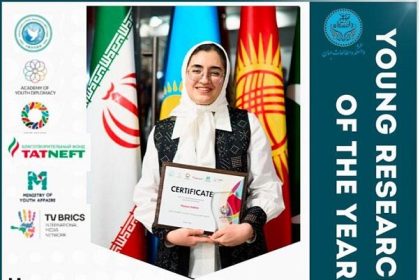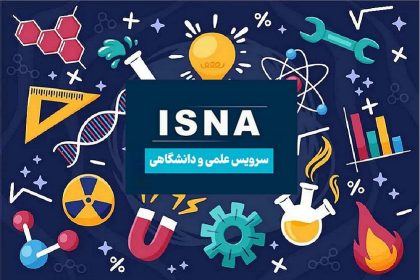The head of the Organization of Geology and Mineral Exploration stated that the organization has not yet identified the economic reserves of lithium as the basic element for the development of lithium-ion batteries, and said: the reserves we identified in the shale and also in the pegmatites are not as economic as the private sector. Willing to invest in these areas.
According to RCO News Agency, A lithium-ion battery is a family of rechargeable batteries in which lithium ions move from the negative electrode to the positive electrode during discharge and in the opposite direction during charging. Lithium-ion batteries are commonly used for portable electronics and electric vehicles, and their use in aerospace and military applications is increasing.
Compared to older generations of batteries, i.e. nickel-cadmium batteries and nickel-metal hydride batteries, lithium-ion batteries are about 3 to 5 times smaller in weight and volume. Lithium-ion batteries produce a lot of energy, but their safety is low compared to nickel-hydride batteries. For example, these types of batteries catch fire quickly. But the new generation of lithium-ion batteries meet every need by solving the “cathode problem”.
Therefore, countries are developing these types of batteries, which is the infrastructure for the development of lithium-ion battery technologies, access to lithium reserves, but according to the head of the Geological Organization, the economic reserves of this element have not been identified by this organization.
Dr. Alireza Shahidi in an interview with ISNA. By stating that the Geological Organization, regarding lithium reserves as an important element in the development of storage devices and batteries in the country, by stating that in this field, unfortunately Not many research works have been done, he said: We in the Geological Organization have conducted studies in the shale and pegmatite, which is the source of lithium. We have implemented it, but we have not yet reached a significant economic reserve. We seek to identify economic reserves in new discoveries.
Shahidi, stressing that currently the exploration of economic reserves in the country has not been done by the Geological Organization. Identified lithium reserves are of low grade and low reserves.
The head of the Organization of Geology and Mineral Exploration emphasized: Lithium is an element whose grade in the reservoirs should be above 150 to 200 PPm, but the reserves that we have identified so far are less than 100 PPm and these reserves are not so much that the private sector is willing to carry out economic activities. have
According to him, the lithium element is also found in pegmatites, apart from shale.
Shahidi continued: Recently, the Geological Organization presented a plan based on which all the pegmatites that exist in the country will be evaluated for lithium, the results of which will be known in the next one to two years.
The head of the Geological Organization stated that the lithium element is also present in the salt lake of Qom apart from Lake Urmia, and said: the content grade of this lithium is low and in general we do not have economic lithium in any reservoir and it is estimated at around 30 to 40 PPm. It is not economical. In this field, our information is not complete and we have to wait for the results of the research.
Generating basic information
Stating that the Geological Organization has a complete commitment to environmental issues, Shahidi said: We have also established environmental risk management in the Deputy Geology Department, where researchers from the organization’s environmental field are working. In this group, based on the policies of the organization, we try in the field Environmental geologyto implement measures.
He considered the main task of the Geology and Mineral Exploration Organization to be the production of basic information, and one of the basic information produced in this organization is the environmental geological layer and added: In this field, especially in the field of arsenic, we have carried out many studies and the country’s arsenic distribution map prepared on a national scale.
Shahidi added: Arsenic has two aspects, one of these aspects is an environmental issue and is very important, because it will become one of the factors that pollute land and water, and the other aspect is that in any area where arsenic is present, mines There is also gold, and by identifying the sources of arsenic, in addition to preventing pollution in the environment, we can also identify gold mines.
The head of Geology and Mineral Exploration Organization stated: Another layer of our information Marine geology is followed in the marine geological development plan of the geochemical layer of coastal pollutants. In these studies, a lot of sampling is done in the coastal area as well as marine sediments.
Shahidi emphasized: In these studies, if we encounter anomalies, we look for the origin of these anomalies. Since these pollutions have a land origin and have entered the beaches or sea waters from the surrounding mountains, we are following them.
In response to the question of whether the marine pollution map has been published, he said: Last year, we prepared 9 cells of 150,000 marine geology as a pilot, one of the layers of which was the geochemistry of sediment pollutants.
Emphasizing that these pilot studies were implemented in the Caspian Sea (Gilan province), Shahidi continued: In the summer of this year, 5 layers of geochemical studies of sediment pollutants were also implemented in Mazandaran province. Our goal is to implement these studies in the entire north, south and Iranian islands in the 7th five-year plan.
Stating that these studies have been done recently, he said: “We are waiting for the analysis to be done, but basically, the pollutants that exist on land enter the sea through river water.” On the side of Rasht, the problem of waste disposal is the main problem that the Geological Organization has on the agenda of the issue of waste disposal placement.
The head of the Organization of Geology and Mineral Exploration stated that this project is part of the job description of this organization and emphasized: The study plan for the placement of waste in Rasht city is on the agenda of the researchers of this organization.
Extraction of strategic elements
The head of Geology and Mineral Exploration Organization stated that there are some elements that we refer to as “strategic elements” and said: These are a series of special elements that were not considered much in the discoveries we made in the past and Traditionally, attention has been paid to base metal elements such as iron and aluminum; Therefore, in recent years, this organization has reconsidered its activities in the field of mining exploration.
He added: In this regard, in the Geological Organization since 1400, following the signing of a tripartite agreement with the Ministry of Mines and the Imidro Organization, we have started a project called the transformation and exploration of the country’s mineral reserves.
Shahidi stated that in the 1980s we identified 40 elements on a scale of 100,000 in the entire country (about 950,000 square kilometers of the country), but since 1400, our policies in this area have changed and we have increased the accuracy of these studies by 4 times. We upgraded the scale of studies from one hundred thousand to one fifty thousand. We identify 57 elements in the scale of one fifty thousandth that occur in the transformation plan of information production.
Stating that these studies are at the TTB (parts per billion) level, he reminded: the identification of about 56 elements is done through the ICTMS device, which is a very well-equipped device that the organization has purchased several devices of this device in the modernization department of its laboratories. is Also, the discovery of gold element is done through another method.
This official emphasized: In these studies, we are preparing a database on a scale of 150,000 for 57 elements. In the exploration development plan, apart from vital, metallic, strategic reserves, we are looking for the non-metallic layer, one of which is lithium.
He added: In addition to that, we have another layer in the field of decorative stones and geoparks, and we study all the metallic and non-metallic elements that are in the study area in such a way that if a team in this area Need information, don’t need to pay a fee.
Stating that 100% explorations are carried out in this area, Shahidi stated: These studies in the form of geological transformation plan started in 1400 and until the end of the seventh development plan, we will implement about 1,260 projects in 260,000 km of the country’s area. Our goal is to reach one or two mines on a global scale by the end of the seventh plan.
The head of the Organization of Geology and Mineral Exploration emphasized: In the geological development plan, apart from preparing geological maps, geochemistry, economic geology, airborne geophysics are also on the agenda, during which the exploration of hidden reserves is pursued, and so far, very good results have been achieved, especially in the province. We have gained Kurdistan; Because we were able to identify a very rich iron area in the depths of this province.
Shahidi said: The grade and reserves of this iron-rich mine will be announced after detailed and specialized exploration.
end of message
RCO NEWS

















